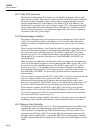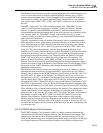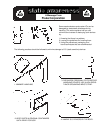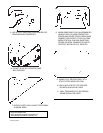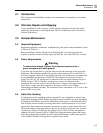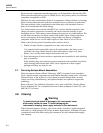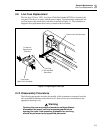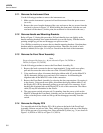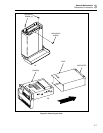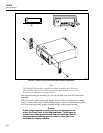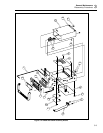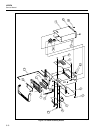
HYDRA
Service Manual
3-4
Most electronic components manufactured today can be degraded or destroyed by ESD.
While protection networks are used in CMOS devices, they merely reduce, not eliminate
component susceptibility to ESD.
ESD may not cause an immediate failure in a component; a delayed failure or wounding
effect is caused when the semiconductor’s insulation layers or junctions are punctured.
The static problem is thus complicated in that failure may occur anywhere from two
hours to six months after the initial damage.
Two failure modes are associated with ESD. First, a person who has acquired a static
charge can touch a component or assembly and cause a transient discharge to pass
through the device. The resulting current ruptures the junctions of a semiconductor. The
second failure mode does not require contact with another object. Simply exposing a
device to the electric field surrounding a charged object can destroy or degrade a
component. MOS devices can fail when exposed to static fields as low as 30 volts.
Observe the following rules for handling static-sensitive devices:
1. Handle all static-sensitive components at a static-safe work area.
Use grounded static control table mats on all repair benches, and always wear a
grounded wrist strap. Handle boards by their nonconductive edges only. Store
plastic, vinyl, and Styrofoam objects outside the work area.
2. Store and transport all static-sensitive components and assemblies in static shielding
bags or containers.
Static shielding bags and containers protect components and assemblies from direct
static discharge and external static fields. Store components in their original
packages until they are ready for use.
3-7. Servicing Surface-Mount Assemblies
Hydra incorporates Surface-Mount Technology (SMT) for printed circuit assemblies
(pca’s). Surface-mount components are much smaller than their predecessors, with leads
soldered directly to the surface of a circuit board; no plated through-holes are used.
Unique servicing, troubleshooting, and repair techniques are required to support this
technology.
Refer to Section 5 for additional information. Also, refer to the Fluke "Surface Mount
Device Soldering Kit" for a complete discussion of these techniques (in the USA, call 1-
800-526-4731 to order).
3-8. Cleaning
Warning
To avoid electrical shock or damage to the instrument, never
allow water inside the case. To avoid damaging the
instrument’s housing, never apply solvents to the instrument.
If the instrument requires cleaning, wipe it down with a cloth that is lightly dampened
with water or a mild detergent. Do not use aromatic hydrocarbons, chlorinated solvents,
or methanol-based fluids when wiping the instrument. Dry the instrument thoroughly
after cleaning.



